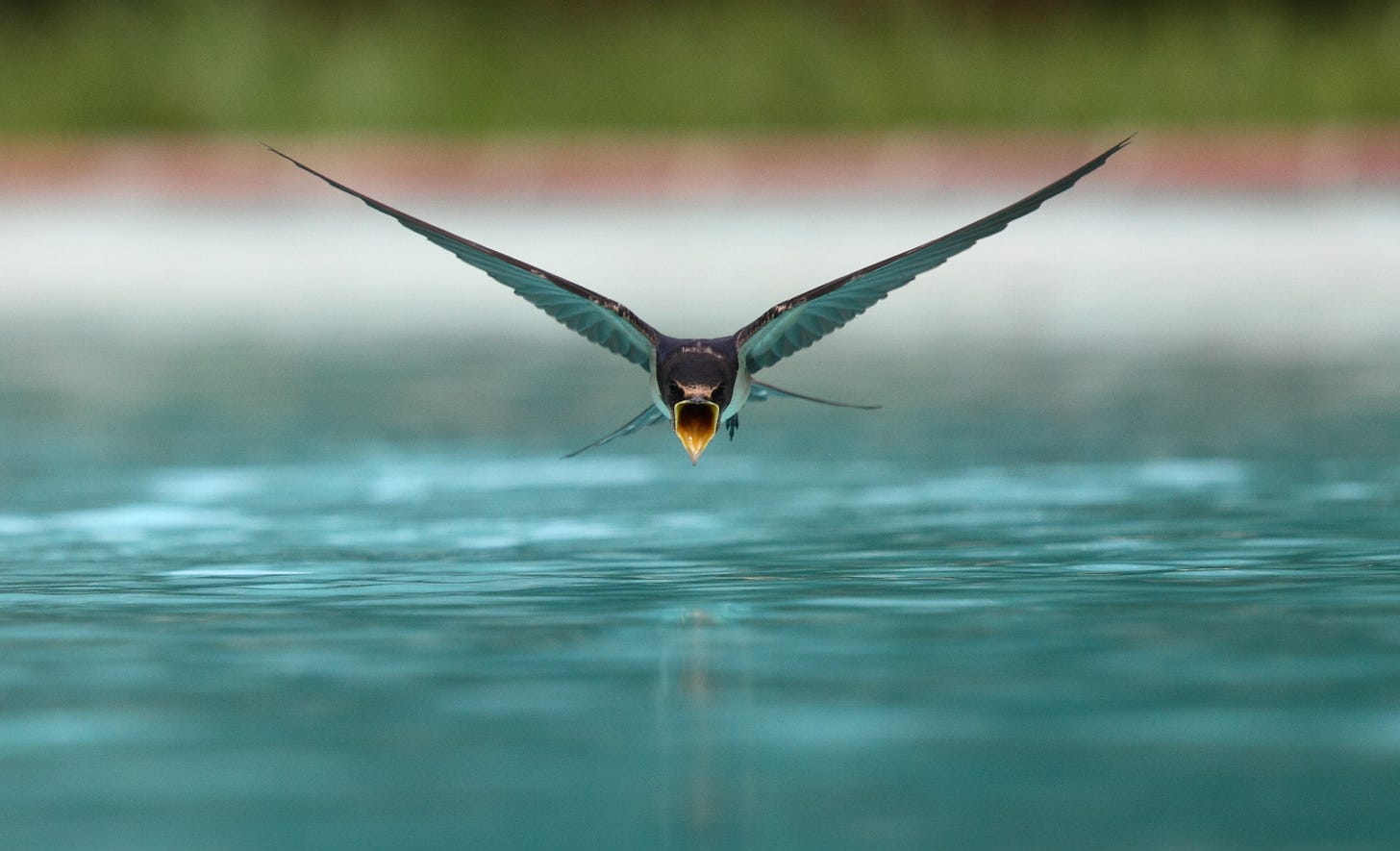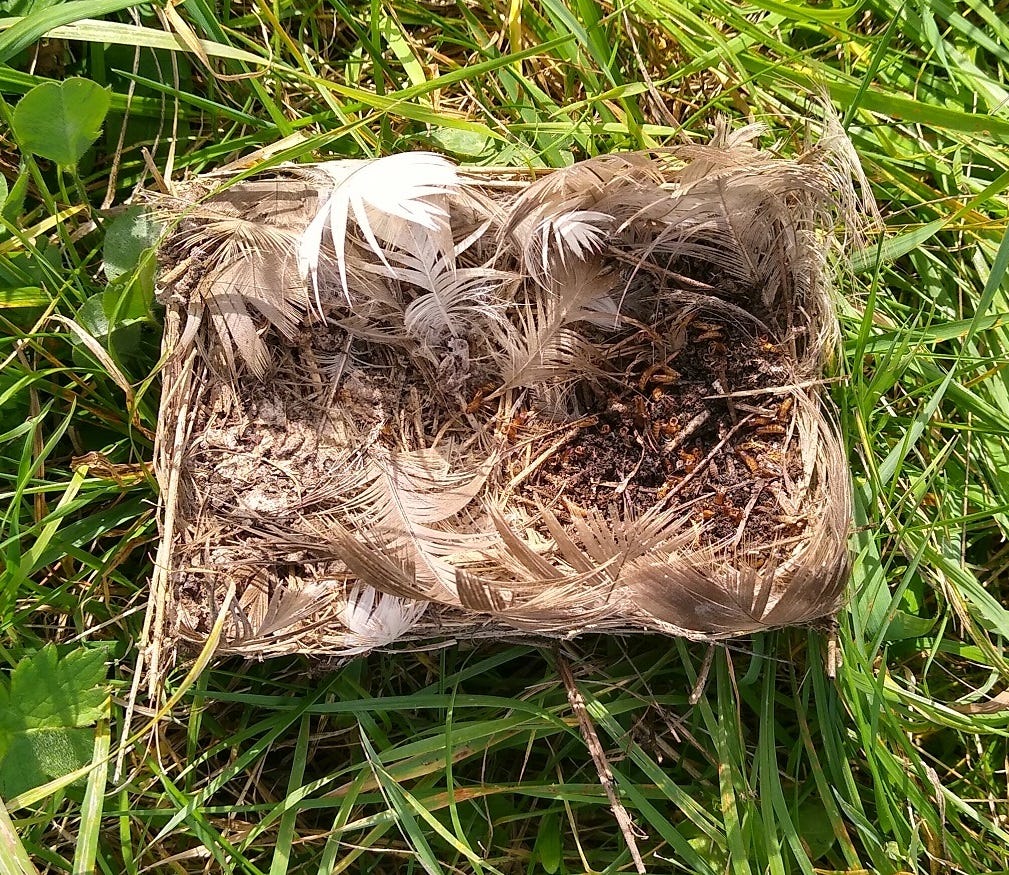Putting Hands to Work
3/24/22 – Working and caring for other species
Hello everyone:
Happy equinox! Last Sunday at 11:33 EST we reached the midpoint between solstices, with a day and night of equal length. I think we could all use a moment of balance between dark and light, right? At each equinox (March and September), the Earth’s equator is lined up perfectly with the Sun in the course of our year-long tilted rotation. For more information, here’s a nice explainer article about the equinox, including a surprising connection to auroras and geomagnetic storms.
To restore a bit of balance in Ukraine… Here are some ways to help Ukrainians directly.
Please remember to scroll past the end of the essay to read this week’s curated Anthropocene news.
Now on to this week’s writing:
I use the word “biodiversity” here a lot, even though it’s an unsatisfying and abstract word, like calling close family your “relations.” Sometimes I’ll write slightly less vague synonyms like “life on Earth” or “the array of living things” instead. The generalization is inevitable when writing about the scale of the Anthropocene and our impacts on plants and animals in every corner of the planet, but it gets tiresome. We need language that reminds us of the physical reality of the leaf, fur, bark, feather, skin, root, and soil that share this world.
The Earth is not contained within a map, globe, or satellite image. Society cannot be found online. Your photo is not you. At some level we still know that the richness of our reality is hidden in shadows as we navigate moment by moment a muddled world of makeshift representations, whether digital, physical, or aural. Words themselves, lest we forget, are mere sounds or scribbles we’ve agreed to endow with specific meanings. They are currency within the information economy, but like coins or bills (or the idiocy of crypto) they are only social constructs.
And since any discussion about biodiversity at this point in history is inherently about lives being lost, about the diminishment of solitary bees, pangolins, hemlock trees, forest elephants, right whales, prairie grass, and tens of thousands more, sometimes we need to step out of the language theater and put our hands to work saving plants and animals that are right in front of us.
Here in the north it’s early spring, the season of mud and first blooms and frost retreating from the ground as we celebrate our reunion with the sun. It’s time to get our hands dirty and walk barefoot again. Heather and I will soon be planting some native shrubs and small trees at our new place here: elderberry, winterberry, witch hazel, dogwood, etc. We’ll cut down and replace the invasive honeysuckle I wrote about last fall. We’ll plant our garden.
For now, though, I’m making bird boxes. Specifically, I’m making 20 tree swallow boxes. Why tree swallows? My rationale, if I can call it that, is a blend of admiration, memory, aesthetics, desire to help, and capability. My mother’s parents lived in a beautiful old home on the shore in Phippsburg, Maine, with a century-old hundred-foot-long wharf that once served fishing schooners. Every year on the same spring day a large flock of barn swallows arrived from Central or South America to nest in the rafters, zipping nonchalantly by our ears as we moved in and out of the dock. Like all swallows, they’re masters of flight, with remarkable speed, agility, and elegance. I loved hearing their beaks click as they grabbed mosquitoes near my head.
Barn swallows, though, are difficult to build for – we need to get back in the habit of inviting them into our buildings – and while they’re rarer around here the species is doing okay. Tree swallows are in decline but easy to help by building boxes. Interestingly, they have no illusions about where these artificial homes come from. I’ve even had a pair fluttering around a box, trying to claim it, as I was planting the pole in the ground. Which tells me that they are cheerfully aware of being our neighbors.
Tree swallows (Tachycineta bicolor – “quick-moving two-color”) are beautiful and astonishing. They are exquisite, iridescent dynamos who drink and bathe on the wing, intercept tiny winged insects at breakneck speed – imagine their brain capacity for visual processing! – and perch unafraid in the open while bird-eating hawks fly overhead. Tree swallows fly like an opera singer sings: swirling, diving, twisting, soaring, all while glinting blue-green in the light like the ocean. They’re also intensely social creatures who have been migrating together in swarms between Central and North America for countless millennia. During the nesting season, tree swallows are voracious eaters of insects, about 2,000 per day per adult and 6,000 per day for the brood in the box (4 to 7 nestlings), which adds up to an estimated 300,000 insects per nesting family in the 45-day nesting period.
Got some mosquitoes and blackflies you’d like taken care of?
At our previous home I maintained a colony of eight boxes for a decade. Thankfully there was a farm next door whose owner was happy to host them when Heather and I moved across town. I’m hoping to expand that colony this year, and replace a few old boxes at my mother’s place. But that’s just the start. I’m donating ten to an existing collection of bluebird/swallow houses at Coastal Rivers Conservation Trust’s Salt Bay Farm, and I’m helping to start a new colony in the fields belonging to Inn Along the Way and at two other sites I’m still figuring out. CRCT and Inn Along the Way are both wonderful local nonprofits: Coastal Rivers does great conservation and education work, and the Inn serves the social and emotional needs of elders and their caregivers. Both have perfect tree swallow locations, old farms with a lovely small pond in the middle of rolling fields. Most importantly, they will both provide reliable long-term locations for the colonies. Every year the need for that kind of habitat reliability grows greater for swallows and other migratory birds.
I will confess that I am an ideal bird carpenter. That is, my capacity to accurately plan, cut, measure, and build things with wood is limited to stout but wonky houses for wild birds (and my mother’s chickens). Their standards for housing are low enough to accommodate my work. And so I’m marching happily on, building a minor midcoast Maine bulwark against decline. (For tree swallows, that is; chickens already rule the world.)
Tree swallows usually show up here in the first week of April. As long as the boxes are up when they arrive, the work is pretty much done until I take them down in the late summer. (The swallows actually fledge and leave the nesting area in June, but I leave the boxes up longer in case bluebirds are using them.) My relationship with the birds once they arrive is simply to enjoy them and hope they have a good breeding season. I worry about starvation if we have several cold rainy days early on, and I worry about heat death if the high heat of summer arrives while the chicks are still in the box. But the worry is all part of the task of caring for others, which is otherwise an honor and a joy.
I do stop sometimes and feel the joy and wonder that accompany the knowledge that these individual birds will, after half a year away in the south, return to the same field or even the same box which I have provided. This is called “site fidelity” or “site tenacity” by ornithologists, and I think it deserves a little fidelity and tenacity of our own to provide reliable care. Bird species with site fidelity become increasingly loyal and tenacious as they age, assuming they have success raising young at your site. They’re your neighbors, remember? It is, in many ways, a relationship.
I’ve been tempted to participate in some citizen science via NestWatch, which requires peeking in the boxes throughout the breeding season to assess the nest, eggs, and young, but so far I’ve just let the swallows be swallows and then looked at the nest after they’ve gone. At season’s end, when I clean out the boxes, I know quickly whether the nest was used and how successful it was. It’s always hard to see the bodies of fledglings that didn’t quite make it, whether because of heat, a lost parent, or because the flock took off before the last chicks were ready to go (as I noted, they are intensely social). But there’s still so much joy in watching the swirling multigenerational flock feeding in the air above as they move on with their mysterious, beautiful lives.

It is a mark of how difficult things have become for migratory birds that tree swallows are considered a species of “Low Concern,” even though their population dropped by an estimated 49% between 1966 and 2014, according to the North American Breeding Bird Survey. And according to All About Birds, the comprehensive site from the Cornell Lab of Ornithology, tree swallows “rate an 8 out of 20 on the Continental Concern Score,” and “is not on the 2014 State of the Birds Watch List.” Partners in Flight estimates a global breeding population of 17 million, which likely is supported only in small part by the boxes people put up for them. “Natural cavities,” as All About Birds notes, “where most Tree Swallows build their nests, have been disappearing for the past 200 years as people clear the land, manage woodlands, cut down older trees, and remove dead trees.” They also face threats from the bioaccumulation of pesticides and other man-made chemicals in the vast numbers of insects they consume.
Worrying about migratory animals, birds especially, is like worrying about grown children. They travel too far and make contact with too many strange places. It seems that we can only look after them in those brief periods they’re around, and hope that others will do the same for them wherever they go.
To that end, Partners in Flight, an umbrella organization made up of 150 organizations spread throughout the Western Hemisphere, works to protect birds inthe Americas. It has four goals we should all support:
Maintain healthy bird populations, in natural numbers, in healthy habitats and ecosystems
Keep species from becoming threatened or endangered through proactive measures and science-based planning
Promote full life-cycle conservation of migratory birds throughout the Western Hemisphere
Promote the value of birds as indicators of environmental health and human quality of life
If you’re interested in getting deep into the sad data on birds in this part of the world, check out the State of North American Birds 2016 list.
For tree swallow nest box design, don’t go shopping. Start here at TreeSwallows.com, which has an incredible amount of information about these amazing birds. The folks behind that site love the birds fiercely, and have hard-won knowledge about the best box design and everything else that will make you a good host. For nest boxes more generally, go directly to the NestWatch site where you can find plans and advice for hosting everything from black-capped chickadees to great horned owls.
Finally, I’d like someday to have a network of a hundred (or hundreds?) of swallow houses to create the bulwark I mentioned above. And sometimes I dream of creating a viable nonprofit focused on motivating the public here to get involved in a bunch of rewilding/restoration initiatives: nest boxes and habitat for a variety of birds, boxes for bat colonies, and no-mow habitat havens in privately-owned fields and meadows for pollinators and other insects. (Got to feed those swallows!) Some of this work is being done, of course, but the more the merrier.
I’ll write more about this next week, but I highly recommend that you find an outlet from the language theater and the Anthropocene tragedy. It’s important to have times of wordless joy in the service of life. Find your species to patch up, replenish, or fiercely defend from the rest of us. Or find your piece of ground to rewild. Or choose a body of water to protect and restore. Build bird boxes or nurture native flowers and shrubs to spread to whoever will plant them. Build pollinator havens. Volunteer for organizations or whoever is doing any of this work.
I’ll pass on the brilliant advice I heard from the great poet Charles Wright: If you can’t be the genius, be the one the genius admires. You don’t need to be the turtle whisperer or the lifelong obsessive rewilder of a native forest or the head of a conservation nonprofit. You can simply be the volunteer they rely on or the supporter who brightens their long days. You can be their funding angel because you believe the work they’re doing makes them your Anthropocene angel.
Whatever you do, though, get your heart out there and your hands dirty.
Thanks for sticking with me.
In curated Anthropocene news:
Want some good news, great perspectives, and a deep dive on the climate crisis? Read Bill McKibben’s new long essay in the New Yorker, “In a World on Fire, Stop Burning Things.”
Europe is suddenly accelerating its shift toward greener, cleaner energy because of Russia’s invasion of Ukraine.
A breakthrough in geothermal energy engineering could be a huge deal.
Fence-building is increasing, as are the threats to wildlife because of it.
Here’s an excellent interactive map of the crisis in U.S. biodiversity.
Here’s some good, surprising news: Texas can easily replace all of its remaining (inefficient) coal plants with wind and solar.










Hi Jason, just finished my first two bird houses. That was a very useful and timely post! I’m planning to make a half dozen to scatter around our little meadow by the marsh. We had a few tree swallows last year and we want to encourage more. Next project is a bat house.